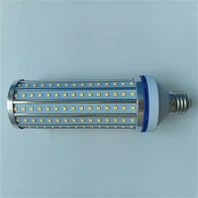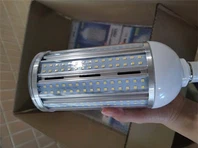How LED lights and seedlings impact the placement and choice of fixtures
The delicate process of growing seedlings indoors or in controlled surroundings necessitates close attention to many aspects, one of which is illumination. Horticultural lighting has been completely transformed by the introduction of LED technology, which gives farmers previously unheard-of control over light intensity, spectrum, and energy efficiency. But there isn't a one-size-fits-all approach to choosing and positioning LED lights for seedlings. Optimizing growth, guaranteeing healthy development, and eventually accomplishing successful transplantation all depend on knowing how seedlings react to various light types and intensities.
The interaction between seedlings and LED lighting is examined in this article, with an emphasis on how fixture placement and selection are impacted by this dynamic. Its goal is to give horticulturists, growers, and indoor gardening enthusiasts a thorough reference to help them make decisions that will support healthy seedling growth.
Recognizing the Light Needs of Seedlings
Light's Crucial Role in Seedling Development
Photosynthesis, the process by which plants transform light energy into chemical energy to power growth, depends critically on light. Since they are still in the early stages of development, seedlings have different light needs than mature plants. Their capacity to flourish after transplantation may be jeopardized by weak, lanky seedlings or delayed growth caused by inadequate or improper lighting.
In order to sustain chlorophyll production and encourage good morphology, seedlings often need a balance between light intensity and quality. Since seedlings are more vulnerable to light stress than adult plants, it is essential to give them with enough light without being overly bright. Another important factor is the photoperiod, or length of light exposure; seedlings usually need 14 to 16 hours of light every day to grow and develop to their full potential. By simulating natural conditions, this prolonged exposure helps seedlings build a solid foundation before they encounter the difficulties of outside settings.
Growth of Seedlings with the Spectrum of Light
The spectrum of light is essential to the growth of seedlings. During the seedling stage, blue light (about 400–500 nm) is especially crucial because it affects stomatal opening, leaf thickness, and chlorophyll synthesis. It keeps seedlings from becoming long or "leggy" by encouraging compact, robust development.
Red light (around 600–700 nm) promotes photosynthesis and aids in controlling stem elongation and flowering, albeit its effects become more noticeable as the plant ages. Although far-red light can influence shade avoidance and seed germination, it must be utilized carefully to prevent unwanted stretching. Additionally, the way red and far-red light interact can tell seedlings if they are in a competitive environment and help them modify their growth plans accordingly.
Contemporary LED grow lights frequently have adjustable spectra, enabling farmers to adjust the light output to the particular requirements of seedlings. For example, in order to promote vigorous growth during the seedling phase, a larger ratio of blue to red light is usually advised. Furthermore, by altering the spectrum throughout the day, certain sophisticated lighting systems may replicate natural sunshine, offering a more comprehensive method of seedling care. Both amateur and professional growers can benefit greatly from this technology since it not only improves plant health but also has the potential to result in faster germination rates and more consistent development.
Choosing LED Lighting for Seedlings
Important Things to Think About
To provide the best possible light delivery for seedlings, a number of parameters need to be taken into account when choosing LED fixtures:
The quantity of useable light (400–700 nm) that reaches the plant surface per second is measured by the Photosynthetic Photon Flux Density (PPFD). Moderate PPFD levels, usually between 100 and 300 µmol/m²/s, are commonly needed for seedlings in order to prevent light stress and promote photosynthesis.
Spectrum of Light: As was mentioned, seedlings thrive in a spectrum that is high in blue light and contains enough red wavelengths. Certain LED lights have spectrums that can be adjusted, enabling fine-tuning as seedlings develop. Given that seedlings may need varied light conditions to flourish, this flexibility can be essential at different stages of growth.
Size and Coverage of the Fixture: There should be no hot spots or shadows on the seedling tray due to the fixture's uniform light distribution. This lessens seedling competition and guarantees consistent growth. It's also critical to take into account the fixture's height because it might influence how much light reaches the plants; height-adjustable lamps are frequently advantageous.
Efficiency of Energy Use and Heat Production: Because they use less energy and produce less heat, efficient LEDs cut operating expenses and lessen the chance of overheating sensitive seedlings. Additionally, less heat output might contribute to a steady growing environment, which is crucial in small areas where temperature swings are possible.
LED light fixture types that are appropriate for seedlings
For growing seedlings, a variety of LED fixture types are frequently utilized:
Panel LEDs: These offer uniform, wide coverage and frequently have a spectrum that may be adjusted. They provide placement versatility and are perfect for bigger seedling trays. Because of its low-profile installation style, they can be used in a variety of growing conditions, including as greenhouses and indoor settings.
Strip LEDs: These may be set up to offer consistent light throughout seedling rows, making them useful for long or tight growth spaces. Because of their adaptability, farmers may design a customized lighting solution that fits certain layouts, increasing productivity and reducing light waste.
LEDs that are clip-on or adjustable: For hobby or small-scale growers, these fixtures are practical since they can be precisely positioned over single seedlings or tiny clusters. Because these fixtures are easily movable or adjustable to suit changing needs, they are very useful for anyone experimenting with different plant species or growing approaches.
The operation's size, financial constraints, and particular seedling needs all play a role in selecting the best fixture. Insight into the LED fixtures' long-term worth may also be gained by taking into account their lifespan and warranty. Growers may invest with confidence in their lighting solutions because many high-quality LEDs come with warranties that reflect their performance and durability. Additionally, by enabling automated adjustments based on real-time environmental data, smart technology integration with LED lighting can improve the growth experience by guaranteeing that seedlings always receive the best light conditions.
LED Fixtures Placed Strategically for the Best Seedling Growth
Distance Between Seedlings and LEDs
To provide the ideal light intensity without causing damage, fixture location is essential. Heat exposure and light intensity are influenced by the distance between the seedlings and the LED fixture. Generally speaking, seedlings need the light source to be both close enough to provide sufficient PPFD and far enough away to avoid overheating or leaf burn.
For most LED grow lights, a distance of 12 to 24 inches above seedlings is recommended, though this can vary based on fixture wattage and design. As seedlings mature, growers can adjust the lights to maintain the ideal intensity by raising or lowering them.
Uniformity and Coverage
Uniform light distribution ensures all seedlings receive equal illumination, preventing uneven growth and competition. Overlapping light patterns from multiple fixtures or the use of reflectors can enhance uniformity. Growers should avoid placing fixtures too far apart or relying on a single light source for large trays, as this can create shadowed areas.
Orientation and Angle
The angle at which LED fixtures are positioned influences how light penetrates the seedling canopy. A perpendicular orientation (directly overhead) is typically best for seedlings to maximize light absorption. However, slight angling can help reduce shading in dense seedling arrangements and promote even growth.
Environmental Considerations
LED placement should also account for other environmental factors such as airflow and humidity. Proper spacing between fixtures and seedlings facilitates air circulation, reducing the risk of fungal diseases and heat stress. Additionally, integrating lighting with environmental controls enhances overall seedling health.
Practical Tips for Maximizing Seedling Growth with LED Lighting
Implementing a Lighting Schedule
Seedlings benefit from consistent photoperiods that mimic natural daylight cycles. Typically, 14-16 hours of light per day is recommended during the seedling stage, followed by a period of darkness to support metabolic processes. Automated timers can help maintain consistent schedules, reducing human error.
Monitoring and Adjusting Light Intensity
Using a quantum sensor or PAR meter to measure PPFD at seedling level allows precise adjustment of fixture height and intensity. Monitoring helps prevent issues like etiolation (stretching due to insufficient light) or photoinhibition (light stress from excessive intensity).
Combining LED Lighting with Other Growth Factors
While lighting is vital, seedlings also require appropriate temperature, humidity, water, and nutrients. Integrating LED lighting strategies with optimal environmental conditions creates a synergistic effect, promoting vigorous and healthy seedlings.
Case Studies and Industry Insights
Commercial Greenhouse Applications
Many commercial greenhouses have adopted LED lighting for seedling propagation due to its energy efficiency and spectral control. Studies show that LED-grown seedlings often exhibit faster growth rates and improved uniformity compared to traditional fluorescent lighting. For example, a controlled trial demonstrated that tomato seedlings under blue-enriched LED light developed thicker stems and larger leaves within two weeks compared to those under standard white light.
Urban Farming and Vertical Gardens
Urban farming initiatives leverage compact LED fixtures to maximize space and light efficiency. Seedlings grown under carefully selected LED spectra in vertical farms show enhanced photosynthetic efficiency and reduced water usage. This approach supports sustainable food production in limited spaces.
Integrating Knowledge for Successful Seedling Cultivation
Choosing and placing LED fixtures for seedlings is a nuanced process that requires understanding the interplay between light quality, intensity, and seedling physiology. By selecting fixtures that deliver appropriate spectra and PPFD, positioning them to ensure uniform coverage, and integrating lighting with environmental controls, growers can significantly improve seedling health and vigor.
As LED technology continues to evolve, offering greater customization and efficiency, the potential for optimizing seedling growth indoors or in controlled environments expands. Embracing these advancements with informed fixture selection and placement strategies will empower growers to achieve consistent, high-quality seedling production, laying a strong foundation for successful plant cultivation.
Ready to Elevate Your Seedling Growth with LED Lighting?
At Benwei lighting, we understand the importance of the right lighting for your seedlings' success. Our high-quality LED lighting solutions are tailored to support the delicate phase of seedling growth, ensuring energy efficiency and optimal light spectrum for your commercial or industrial applications. If you're considering an upgrade or installation of new LED fixtures, don't hesitate to Ask an Expert at Benwei lighting. We're here to help you illuminate your space effectively and foster robust seedling development.




https://www.benweilight.com/professional-lighting/led-grow-light/t8-plant-grow-lights-dimmable.html
Our address
No. 5-3 Niujiao Road, Yanchuan Community, Yanluo Street, Bao'an District, Shenzhen
Phone Number
+86 18659785153
bwzm04@ledbenweilighting.com





